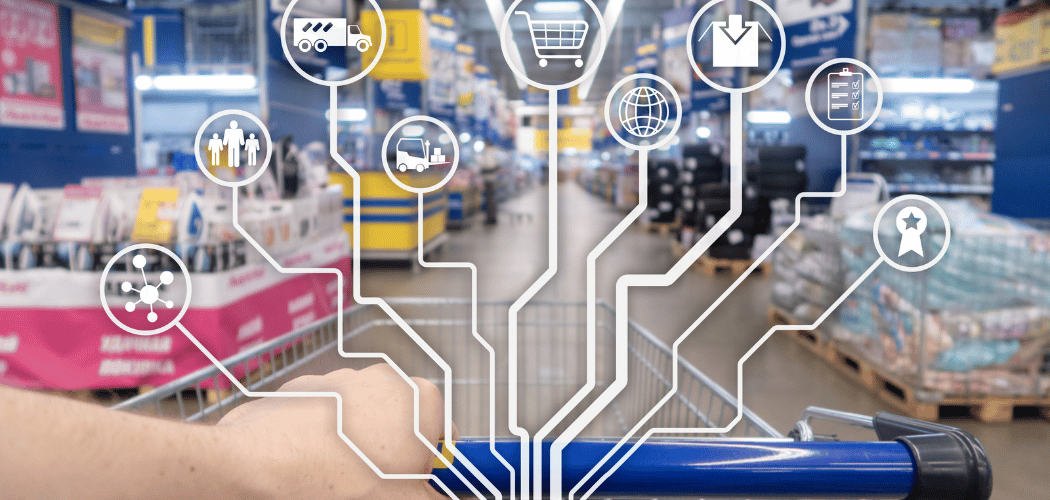Part One
How to create a loyalty program that will work for your business, and not just distribute discounts between your clients - Part 1 of 2.
Editor’s Note: Elena Naumchik, CLMP, an expert in loyalty programs and customer experience management from Russia, prepared this guide for enterprises who want to start a loyalty program for the first time and avoid serious mistakes. It is especially applicable for offline or electronic retail but can also be applied to the service and financial industries. If you are planning to launch a coalition or multi-partner program, this article will not help you, because such programs operate on different principles.
No two loyalty programs are identical. Each business is unique, its goals and resources are unique, its positioning and corporate culture are unique. But the sequence of steps that should be taken in order to implement an effective loyalty program are remarkably similar.
Developing a loyalty program: 7 steps towards success!
- Set program goals that are relevant to current business objectives.
- Study customer needs.
- Devise mechanics that reinforce business goals based on customer needs.
- Build a financial model that accurately reflects potential outcomes and costs.
- Automate program mechanics.
- Provide operational maintenance for the program.
- Communicate everything to the customer, including the terms and conditions of the program.
Step 1. Setting goals and understanding business expectations
It is important to remember that a loyalty program is a tool. A tool does not have its own goal, but there is a specific framework of possible application, determined by its characteristics.
Loyalty program characteristics:
- recording data on purchases in relation to customer accounts;
- the possibility to segment customers based on certain parameters and their combinations (gender, age, purchase amounts, frequency of purchases, time since the last purchase, assortment, trigger actions, advocacy/referral etc.);
- the possibility of assigning different reward rules for different customer segments;
- the possibility of personalized communication, including all relevant channels and based on certain segments, rules or other triggers
In other words, a loyalty program allows the evaluation of economic and behavioral activity of individual customers and influencing different activities in different ways. Setting special rules and rewards for customers and sending them individual messages helps achieve specific activities.
Think of business goals that you could achieve faster with this tool.
The example of loyalty program goals corresponding to the business goals.
Increasing the client's LTV (Lifetime Value) by:
1) changing the behavior of target audience:
- increasing the frequency of visiting a website or store;
- increasing the number of orders;
- increasing the number of categories in orders;
- expanding range within the category;
- preventing outflow (churn).
2) increasing target audience profitability
- increasing average check;
- increasing the proportion of high-margin goods purchases;
3) reducing transaction costs:
- reducing the number of abandoned baskets and returns;
- reducing the number of purchase rejections on delivery;
- optimization of inventory due to better understanding of customer needs.
This is not a complete listing. It can be longer or shorter, it can include goals for generating additional income from partners, goals for "buying" customer loyalty from competitors, and so on.
Mistake # 1. Assuming that the tool may have goals that are different from business goals
Each time, the goal must be formulated in such a way that the control over its achievement is simple and clear. That is, if you cannot precisely and clearly answer the question “How do we know that the goal has been achieved?”- delete such a goal from your list.
The words “We want to create the best loyalty program” may sound ambitious, but, as a rule, behind this statement there is rarely an understanding of the answers to the questions “How will we understand that we have already become the best?” and “How will we track the dynamics?”
Mistake # 2. Setting goals not specific enough or even completely contrary to the properties of this tool, which will prevent the effective development of the program and the underlying rules.
Step 2. Studying market and customer needs
Experience suggests that even large companies often do not know their customers. A company seems to collect data on the number of purchases, content of checks, keeps statistics of complaints and appeals, but the image of audience remains blurred and is determined by some meaningless demographic descriptions: gender, age, income, occupation, perhaps the presence of children.
To ensure that your loyalty program finds acceptance among your customers, it should interest them by offering something valuable. To understand what exactly to offer, you can:
- study the actions of competitors so that your offer surpasses the standards of the market;
- study the interests and needs of your target audience. You need to understand the characteristics of the people interested in your product and category. What motivates them? What attracts them and what repels them?
To study the competitive environment, desk research is often used - that is collecting information on the internet, including articles about actions and technologies, program rules published on websites, customer reviews on consumer forums and social networks, as well as calls to hotlines. Important additional information can be provided by "mystery shopping" the competition and enrolling in their programs.
The easiest and at the same time most informative way to find out customer needs is to ask them directly. Conduct qualitative research, such as in-depth interviews or focus groups.
Mistake # 3. Underestimating the benefits of quality research and rely only on transaction data.
There is an opinion that everything you need can be derived from studying transactional dynamics such as purchases or site visits. Indeed, these data reflect real consumer behavior and are both very informative and accurate. But this information has one large drawback. It answers the question “How did customers behave?” at different times, but, unfortunately, does not answer the question “Why?”
Qualitative research, despite its limitations (small sampling of your customer base), can help provide insight. While you should not take everything heard in a focus group on trust, you can learn from the words of customers and create possible scenarios. Qualitative research insights can be subsequently verified by analyzing sales statistics or conducting quantitative surveys. This will save you from mistakes.
According to the research results, you can make a list of hypotheses about rewards most wanted by customers, the design and operation of an ideal program, collect impressions of competitors' programs and gain a lot of other valuable information.
It is possible that based on the results of this stage consumer perceptions that are not related to the loyalty program will become obvious. In this case, the satisfaction of these requests should necessarily be considered among additional measures to reduce outflow and increase customer loyalty.
If you do not launch the loyalty program from scratch, but relaunch or refresh an existing one, you could study the customer purchases data available to you in the context of customer accounts.
- Sales statistics:
- RFM (Recency of previous visit (R), Frequency of visits (F), Monetary - purchase amounts (M));
- the assortment of purchases in the context of clients (product categories, quantity of goods, product characteristics, reasons for selecting).
- Statistics of non-transactional contacts and visits (visiting website pages, viewed goods, not purchased items in the basket, advocacy and referral posts, etc.).
- Customers data (city, gender, age, interests, etc.).
To develop program rules, it is important to find out as precisely as possible how different groups of customers behave and what factors influence them in making purchase decisions.
Also Read: What Happens when You Can Empathize with Your Customers at Scale?
Step 3. Developing the program mechanics (rules)
After we have set goals and studied customers, deriving insights about out what manifestations of loyalty we want from our customers and understand what is important to them, we can start developing the rules of the program.
All experienced loyalty program developers are aware of the “three pillars” - customer needs, the satisfaction of which is important for a successful program realization:
- pleasure
- benefit
- ease
Research allows you to understand how to best provide and emphasize compliance with these three needs in your program, both for all clients together and for different customer segments.
Contemporary loyalty programs are quite complex. They can include the integration of several IT-systems, contain branched algorithms, use machine learning, etc. But it is important to remember that the maximum response from customers is still enabled by simple and clear mechanics.
Mechanics (program rules) include: a condition and a reward. Conditions correspond to the loyalty program goals.
For example: if one of the loyalty program goals is to increase the purchase frequency during a year, the condition may be: “Make at least X purchases in N months and get... (reward)”.
To increase the average check: “Make purchases totaling above X and move to the next level (list of rewards corresponding to the new level).”
Loyalty program rewards are classified into soft (emotional, non-material) and hard (rational, material and free).
HARD
Merchandise, travel, prizes, gifts that are free based upon a customer’s behavior within the program.
SOFT
Emotionally significant, often indicative of a client's status, non-financial rewards and privileges. Including: individual booking, early access to sales, personal manager etc.
A reward can be given to a client directly after the conditions are fulfilled or indirectly by awarding bonus points or miles.
As a result of awarding bonus points, the client is entitled to certain soft or hard rewards.
Mistake # 4. Considering bonus points as a kind of loyalty program reward. In fact, this is a scoring element, which is the equivalent of reward value in conventional units of the program.
The reward can be both internal (discounts and gifts from the company assortment, its own content and services of the company, etc.) and external (from third parties: tickets, content of other sites, partner products, points and miles of other companies' loyalty programs, payment for mobile phone, etc.)
Depending on why a rule works for a client, the mechanics of a loyalty program are divided into general, segmented or triggered.
General mechanics (examples)
For any purchases, 2% of the cost is awarded as bonus points on all loyalty cards. Often such general mechanics is called a "basic rule" of the program. It is usually openly published in the terms of the program as the minimum level of reward available to everyone.
Segmented rules
Very widespread in Russia for example:
“To beautiful ladies +1000 points on March 8” (segment: women).
Triggered rules
“For every fifth purchase — free delivery”
“When a transaction totals €100 — you receive a gift”
Program mechanics can be hidden (hidden scoring) and explicit (open scoring).
In case of open (explicit) scoring, all conditions for receiving reward are communicated to clients in advance. In case of hidden scoring, the conditions are not communicated to clients, they receive any individual encouragement or offer, through personal communication channels.
An example of a hidden scoring reward:
An airline gives a class upgrade for a passenger who has recently joined the loyalty program in order to increase his emotional commitment and demonstrate the benefits of a business class flight. No announcements or notifications are sent, they just change the ticket at gate.
An example of an open scoring mechanic: “For every €100 purchase, get a pass ticket to an aqua park”.
When studying data, you may find that customers vary significantly in terms of purchase composition and their behavior scenarios. It is hard to find universal rules that will work for everyone.
There are a lot of possible options of mechanics. Just try to focus on the fact that your program should provide customers with something valuable and emotionally significant.
Mistake # 5. Over-complication of program rules is especially dangerous at the start. Give the core of your audience a simple, understandable value.
To improve the effectiveness of program rules, segmentation is applied.
Marketers divide target audiences of customers into groups (segments) with similar parameters of consumer behavior. Having data on the clients' purchase history, you can create rules for the entire target audience, as well as for separate segments, up to individual rules for an individual client.
If there is no data history, you can make assumptions (hypotheses) about what the most important segments are in your customer base, and later test your hypotheses on a limited sample.
Your aim is to realize as completely as possible what data you will collect at the first and following stages and to make a list of rules that you are planning to apply. Detailing rules for each segment up to financial conditions is not necessary.
Think about the mechanic constructor, in which specific numbers will act as variables and which can be combined with each other.
Mistake #6. Trying to calculate the exact financial terms of the rules for all segments before running the program. You need to make preliminary assumptions based on your data and research activities, but you will have time to confirm this work after starting the program and collecting minimal statistics. This effort will be a long process and you will need to confirm, specify and correct as the program unfolds.
A loyalty program can be developed endlessly!
In order not to confuse your customers, nor set a level of reward at the start that is difficult to maintain, you should move from general rules to personalized ones, test the effect of each new mechanic before making it one of the rules for large segments.
At launch, "basic" (common, universal for everyone) mechanics and mechanics for large segments are developed, and then, as data on consumer behavior are accumulated, rules for smaller segments, new triggered mechanics and individual offers are added.
Elena Naumchik is the only Certified Loyalty Marketing Professional™ in Russia and a long-time member of the Customer Strategy Network. She is an active participant of Russian professional community, founder of a local organization which supports the loyalty, CRM and customer experience movements and operates a private consulting practice for both B2B and B2C brands.




